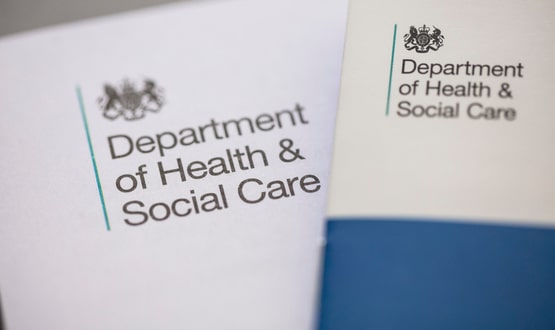Exercising Choice
- 6 March 2007
 When Connecting for Health (CfH) appointed its GP clinical leads more than two years ago, there were three big issues on the primary care IT agenda: consent and confidentiality for the care record, Choose and Book and system choice for practices.
When Connecting for Health (CfH) appointed its GP clinical leads more than two years ago, there were three big issues on the primary care IT agenda: consent and confidentiality for the care record, Choose and Book and system choice for practices.
While items one and two still rumble on, the GP leads, Dr Gillian Braunold and Professor Mike Pringle, believe they are about to deliver on number three with the start of procurement for GP Systems of Choice (GPSoC).
Given the level of noise that has surrounded system choice since 2003 and the concern that practices were being forced to take systems provided by local service providers (LSPs), the Memorandum of Information on GPSoC contains one surprising statistic.
It states that so far LSPs have managed to gain just a 7% share of the primary care IT market with 93% of systems still supplied to practices outside the LSP contracts. Less surprising is the future direction of travel outlined by CfH and the Department of Health. The memorandum adds: “The expectation is that the LSP share of the market will grow over time.”
The memorandum does not spell out how LSPs will achieve a larger stake in the market, and over what sort of timescale, but Dr Braunold is clear about what she believes will govern the pace of change.
She says: “It will be subject to LSPs delivering what GPs want. Ultimately the aim is for level six systems [fully integrated to the NHS Care Records Service level six integrated systems] but in the meantime LSPs could deliver early integration with the other care settings.”
An obvious example is the systems developed by TPP, which probably account for 6% of the 7% LSP market share. The company’s system have appealed to primary care trusts (PCTs) interested not just in the GP systems but also the potential for sharing of data if the trust also takes TPP’s child health or community modules.
Integration, or interoperability, is a key part of the later stages of CfH’s six stage maturity model for GPSoC which covers increasing levels of functionality. Level 3 involves compliance with GP2GP record transfer, level four a move to hosted systems with levels five and six covering increasing levels of integration with secondary care systems. In reality it is a four stage model as all suppliers are required to join at level two or to have reached level two within 12 months of signing a GPSoC contract.
For level two suppliers must provide a system which meets core clinical system requirements plus compliance with the Quality and Outcomes Framework, Choose and Book, the personal demographics service and electronic transmission of prescriptions.
The GPSoC model means that if, as is highly likely, the vast majority of practices want to stick with the systems they currently have, those 93% of systems will simply switch to a contract provided under GPSoC between the Department of Health and the supplier with a ‘call off’ contract involving the primary care trust.
Those practices using the 7% of systems supplied by LSPs will also continue to maintain their LSP contract under what Dr Braunold says with be the same arrangements as that applied to GPSoC contracts. Anyone wishing to move to a new system will have to do so under an LSP contract if that system is covered by an LSP agreement, for instance choosing to move to INPS’s Vision system in London. However a practice from the north of England choosing to move to Vision will do so under a GPSoC agreement.
The key principle of GPSoC is that funding for GP systems will be covered centrally so that practices and suppliers are no longer at the mercy of cash-strapped PCTs for whom a system fully-funded by an LSP is a much more tempting offer than the prospect of continuing to meet the cost of maintenance contracts from within existing resources.
The potential savings are revealed by Paul Molyneux, chief information officer for Yorkshire and Humber Strategic Health Authority. In a report to its February board meeting Molyneux tells board members that more than 25% of practices in the SHA, 217 out of 831 practices, have now migrated to TPP, the LSP solution. The report adds: “This equates to roughly £1million+ annual maintenance savings across Yorkshire and the Humber.”
It adds: “Excellent progress has been made in implementing NPfIT systems in primary care. The number of NPfIT GP systems in certain PCTs, which have also implemented NPfIT Community and Child Health systems mean that we can now start to explore the benefits to clinical care from the more effective sharing of patient-based information (subject to the appropriate security and confidentiality processes and safeguards).”
The direction of travel is clear and beyond TPP, the three main players in the GP market, EMIS, INPS and iSOFT, are all at various stages in developing systems which promise integration across care settings.
For the four other smaller existing suppliers in the market, Ascribe, Seetec, Microtest and Healthy Software, GPSoC promises protection from the pressure to change.
Rob England, managing director of Healthy Software, believes GPSoC is broadly good news for his company and the practices using the Healthy Software system.
As a supplier England says the GPSoC procurement will also give the company credibility which will help it in its other markets which in Healthy Software’s case involves supplying systems to private general practice and to hospices.
He says: “It gives practices a definitive list of choices and if practices choose to say where they are there is not too much that other people can do about it. I hope the PCT pressure for forcible change will now fade away and disappear.”
Despite the pressure England says no Healthy Software practices have moved on to an LSP solution over the last three years although in Bolton the company found itself head to head with the PCT which wanted to move all its practices to INPS in the days before TPP became the LSP solution in the north west cluster. In the end England says the three PCT-run practices using Healthy Software’s Crosscare system moved but the other eight Healthy Software practices did not.
England argues that, despite the GPSoC maturity model, practices should be able to dictate the pace of change.
He adds: “For example I see no demand from our practices to provide a hosted solution.”
GP2GP is another area which might prove interesting for CfH’s maturity model since, as revealed by EHI Primary Care http://www.ehiprimarycare.com/news/item.cfm?ID=2494, three systems including Healthy Software and TPP will be unlikely to be compliant for some time because of the version of Read codes use in their systems.
However the maturity model would not appear to be set in stone. Dr Braunold says the position on GP2GP needs to be examined. She adds: “If a supplier was exchanging between its own practices and able to receive from other practices, for example EMIS to TPP, then that is something we would have to examine. What we don’t want to do is penalise practices that are making an effort and using a higher coding system for instance CTV3 which we see as being on the path to SNOMED which is obviously the long term answer to all this.”
For now all eight existing suppliers are busy supplying the information required by GPSoC’s pre-qualification questionnaire which must be submitted by next Monday (March 12).
For Sean Riddell, managing director of EMIS the company with potentially the most to gain from GPSoC, the agreement cannot come soon enough,
He adds: “PCTs are still telling people that they have to move to an LSP system which is in clear contravention of what the position is.”
The key question for practices, and for suppliers like EMIS and Healthy Software, is whether GPSoC will deliver the real freedom of choice it promises.
Dr Braunold, naturally, is optimistic that the small financial costs PCTs will still have to meet under GPSoC will not sway decision making. She says: “I don’t think any PCT in financial deficits will make a decision based on what are very small costs. It is the long term recurrent funding that will matter.”
Related article
OJEU notice signals start of GP systems procurement
Useful documents
CfH’s OJEU procurement information




